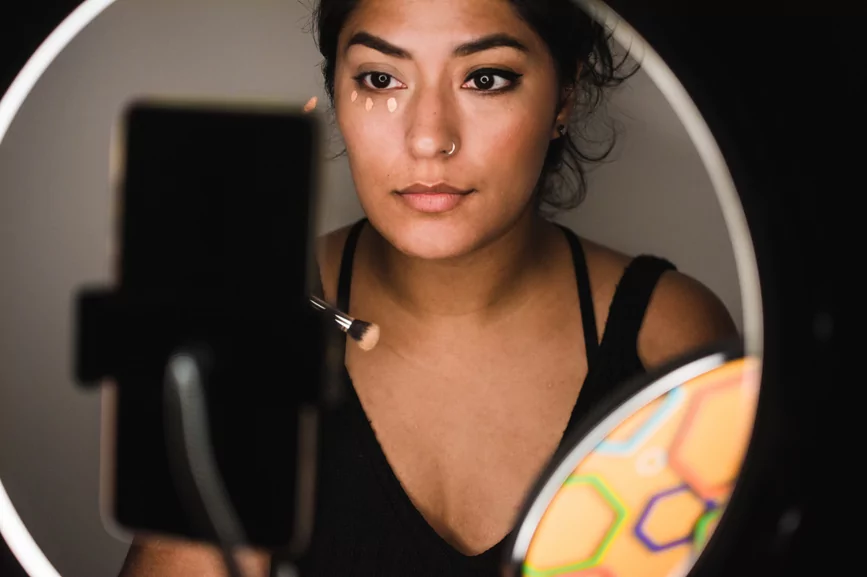Relevance for your YouTube Video
Note – this is part 5 of a series of resources about marketing courses on YouTube. To start at the beginning click here: Part 1 – Online course marketing with YouTube – Part 1
So far in this series we’ve covered the benefits of YouTube for marketing your online course, the overview of a teaser video structure, the basic process of how you actually drive sales from YouTube and we’ve seen that views are key to conversions from YouTube, and we get views by increasing two factors on our video:
- Relevance – which is driven primarily by the YouTube Video Title, Description, and other textual items including video tags.
- Popularity – driven by Views, Ratings, Comments
I’ve put together a short summary / checklist as a reference for you. Get the Checklist here.
Also, we’ve put together the Youtube video marketing guide so you can create stunning videos.
Let’s start with the Relevance attributes:
YouTube Video Relevance
Relevance – tracks how relevant a video is to the search terms someone enters – so if you search for cats you’ll find videos on cats. And the videos with the most reference to cats will be more likely to appear at the top of the list. Our relevant attributes include: Title and Description and other textual items including video tags.
Title – is exactly that. The title of your video. There are two goals for your title:
First – to be relevant – and it means you want to include the search terms or keywords that you want to attract. It makes you more likely to be found
Second – the next goal is to get people to click on your video and watch it.
Once your video pops up in the search results the title of the video helps entice people to watch. It should be interesting, descriptive and accurate.
Consider the following when picking your YouTube Video title:
- Most Powerful: The title is hands down the most important text associated with your YouTube video. It has a huge impact on driving your video to the top of relevant searches and a huge impact on whether someone clicks on it or not once they find it in a search.
- Descriptive: Be descriptive of the content in your video.
- Accuracy: Be accurate about what your video contains. Nothing turns viewers off faster than a video that does not deliver what your title promises. Also, the #1 reason for dislikes on a YouTube video (that thumbs down rating) is that it does not deliver what they title promises.
- Keywords: Consider the key search words you are trying to target with this video and include them in your title.
Note that the words that appear near the beginning of the video title hold more weight for search. So ensure your primary keywords are close to the start of the title.
So “Learn how to Sleep Train your child” is not as good as “Sleep train your child”
You only get 100 characters for your title so choose wisely!
YouTube Video Descriptions:
Next up is the Description. This is the space for 5000 odd characters or 1000 words that you can put below the video to describe it. People do not see this until after they have clicked on your video.
There are two key goals for your video description:
First – is to be relevant or show up in searches. Similar to the title you’ll want to include relevant search terms in the description. The difference here is you have much more room to play with. You can even list keywords out at the bottom of your description. You should also describe accurately what’s included in this video.
The second goal of the description is conversion. This is another place to give people a call to action. You can pitch a few key reasons to visit your site or check out your course.
My video descriptions look something like this:
- Quick call to action e.g. “More lessons at mysite.com” (ensure the link works) and let them know what they should do when they go there. E.g. Sign up for a free trial, or check out the online course.
- Optionally here you can list some other resources available at the site including… info/resources/lessons/videos/download (list a few specific items or topics)
- A short description of what’s in this video. Pack this full of keywords.
- Follow this up with another call to action and a link. E.g. “And you can get even more of this at mysite.com”
- Optionally list out some other key search terms that relate to your topic.
Many people leave their video description blank. Please don’t! It’s a big opportunity to increase the chance you’ll be found and increase your conversions.
Subtitles / Close Captions / Transcript
Another often overlooked item that affects how likely your video is to appear in a search is the subtitles or closed captions or transcript of the video. This is literally just a script of what you say in your video.
Close Captions or subtitles are a great way to get tonnes of keyword exposure. If you mention leadership in your video often then it will appear often in your subtitles.
Google and YouTube are constantly trying to increase the odds that someone searching finds what they want and transcripts really help with this. While you can put anything you want in your video title, even a dishonest title, the transcript is tied to your audio and forces you to be honest. Because of this, YouTube and Google can put more trust in the transcript or captions. They use speech recognition to confirm so you can’t cheat on search terms.
A note about the transcript. If you don’t have one or can’t produce one, don’t worry about this one too much. It’s not as important as the title and description.
Tags
Finally the last item we’ll look at for relevance is video tags. YouTube allows you to add Tags to your videos. These are just keywords to let YouTube know what the video is about and what search terms it should pop up next to.
This one is pretty simple to deal with. Your video Tags should describe the content of the video. Also consider including words that describe the problem you’re solving. Think of words that someone searching for your video might use.
You have about 500 characters for the Tags section. I’d suggest using us as much of that space as you can.
Next up… Part 6: Increasing the Popularity of your YouTube videos.








